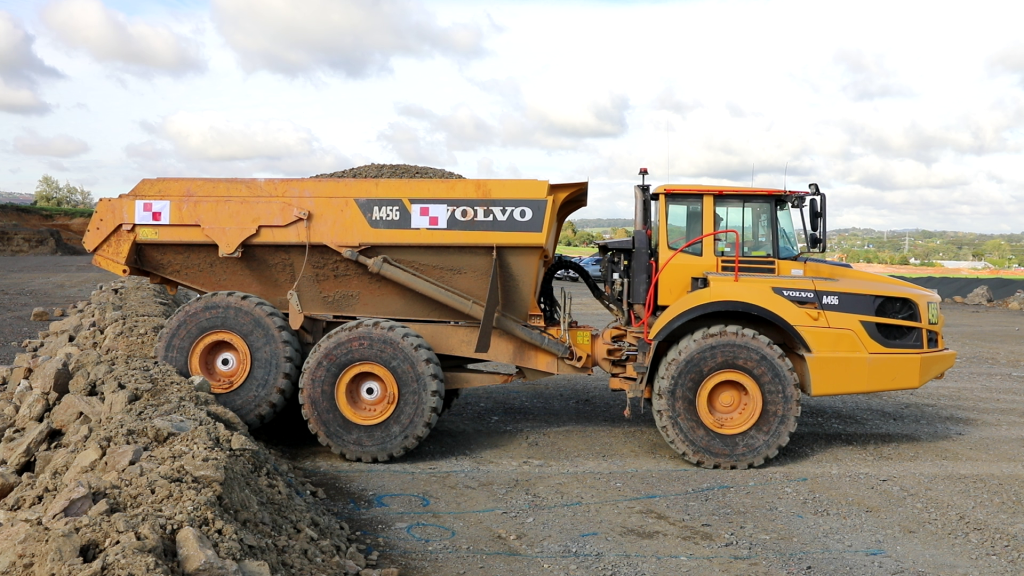Stevenson Drives Science-backed Approach to Safety Bunds in Quarries
Our journey from best-guess to research-driven edge protection.
Safety bunds are an essential part of any surface mining and quarry operation but how safe are they?
In March 2020, a subcontractor tragically died in an accident when the articulated dump truck they were driving travelled over a safety bund and fell to the bench below at the Stevenson quarry in Drury, Auckland.
In the wake of this tragedy, Stevenson and Fulton Hogan invested in a research project partnering with The University of Newcastle, Australia, to look at the science behind bund design in quarries.
Stevenson General Manager, Ben Hussey, explains that we took a proactive approach and wanted to invest in science-backed safety systems to better protect our people.
“At the outset, it wasn’t clear how effective the bunds were at keeping our people safe and we wanted to understand what could be done differently or better to prevent similar accidents from happening in the future,” he says.
In designing the research parameters, multiple factors were considered like different dump truck chassis, speeds, approach angles, bund dimensions and materials.

“We looked at what factors affected bund effectiveness and the safety controls we could change or improve in our quarries like truck speed to reduce accidents and harm to our people,” says Hussey.
“We felt that the current guidelines here and overseas for safety bunds are the regulator’s best-guess at edge protection design. Using real-life simulations with articulated and rigid dump trucks really helped us understand the correlation between dump truck type, speed and bund geometry,” he says.
There was collaboration at every turn in this research project.
The partnership with The University of Newcastle provided the technical prowess of Associate Professor Klaus Thoeni of the School of Engineering and the necessary computing power to execute the numerical simulations.
“We’ve achieved what we set out to do – to know how we can design, build and maintain safety bunds to stop dump trucks going over the edge in our quarries,”
In 2021, full-scale testing started with drivers manning test trucks, surveyors recording the smallest of details to engineers setting up the test bunds.
Associate Professor Thoeni designed the project and managed the advanced numerical model which crunched the numbers and ran thousands of scenarios for around three months with a supercomputer at The University of Newcastle. This intensive computational effort provided detailed insights and robust data that were crucial for the project’s success.
A research paper outlining the project’s findings was recently peer reviewed and published in the Journal of Rock Mechanics and Geotechnical Engineering (JRMGE).
“We’re pleased to have the research findings published by JRMGE as it’s a prestigious international journal showcasing the latest research in rock mechanics and geotechnical engineering,” says Associate Professor Thoeni.
Major quarry operators in Auckland, Kaipara Quarries Group in Brookby and Winstone Aggregates in Hunua, joined the research project and development of the new standards.
Fulton Hogan National Quarry Manager, Peter Walsh, explains that collaborating with other quarry operators was a no-brainer.

“We wanted the research to be as thorough as possible so working with some other big operators meant the outcomes could be applicable to all quarries in New Zealand,” he says.
With the project successfully wrapped up in early 2023, the last step was to put the learnings and new standard into action.
“Our teams now have a simple matrix to follow when designing, building and maintaining bunds in their quarry”
The research was presented at the annual Quarry NZ conference in July 2023 and was shared with WorkSafe, New Zealand’s work health and safety regulator.
WorkSafe has now disseminated the research within their inspection teams so the findings can be incorporated into their work with quarries around the country.
For Fulton Hogan and Stevenson, the research findings have been used to develop a functional and straightforward standard to be applied across all quarries.
“Our teams now have a simple matrix to follow when designing, building and maintaining bunds in their quarry,” says Walsh.
Truck type, maximum load capacity, together with the approach conditions (straights or bends) and speed limits are critical factors used to design and build best-practise safety bunds.
Reflecting on the project and new standards, Hussey explains that we wanted to take a step back and apply some rigour using numerical simulations, which has been a ground-breaking piece of research in New Zealand that can be applied practically in our quarries.
“We’ve achieved what we set out to do – to know how we can design, build and maintain safety bunds to stop dump trucks going over the edge in our quarries,” he says.
View the published research paper here.
Contact for further information
Aimee Burness
Communications and Media Advisor
Aimee.Burness@fultonhogan.com +64273074573
